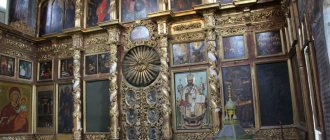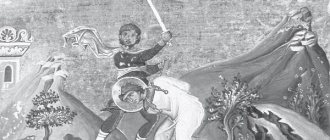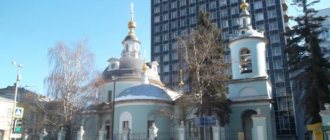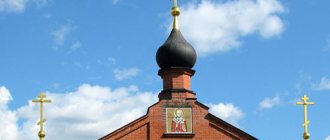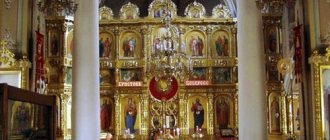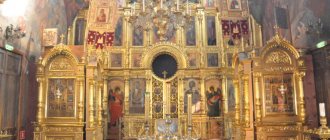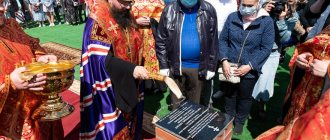Mir
Russia Moscow Church of the Great Martyr Demetrius of Thessalonica on Blagush (Moscow) Map is loading...
{"format":"leaflet","minzoom":false,"maxzoom":false,"limit":50,"offset":0,"link":"all","sort":[""], "order":[],"headers":"show","mainlabel":"","intro":"","outro":"","searchlabel":"\u2026 \u0441\u043b\u0435\ u0434\u0443\u044e\u0449\u0438\u0435 \u0440\u0435\u0437\u0443\u043b\u044c\u0442\u0430\u0442\u044b","default":"","import-annotation":false,"width ":"auto","height":"350px","centre":{"text":"","title":"""link":"""lat":55.7812219999999996389306033961474895477294921875,"lon": 37.7314999999999969304553815163671970367431640625,"icon":""},"title":"","label":"","icon":"","lines":[],"polygons":[],"circles":[ ],"rectangles":[],"copycoords":false,"static":false,"zoom":8,"defzoom":14,"layers":["OpenStreetMap"],"image layers":[] ,"overlays":[],"resizable":false,"fullscreen":true,"scrollwheelzoom":true,"cluster":false,"clustermaxzoom":9,"clusterzoomonclick":true,"clustermaxradius":80, "clusterspiderfy":true,"geojson":"","clicktarget":"","showtitle":true,"hidenamespace":false,"template":"","userparam":"","activeicon": "","pagelabel":false,"ajaxcoordproperty":"","ajaxquery":"","locations":[{"text":"\u003Cb\u003E\u003Ca href=\"/palomnik/%D0% A5%D1%80%D0%B0%D0%BC_%D0%B2%D0%B5%D0%BB%D0%B8%D0%BA%D0%BE%D0%BC%D1%83%D1%87% D0%B5%D0%BD%D0%B8%D0%BA%D0%B0_%D0%94%D0%B8%D0%BC%D0%B8%D1%82%D1%80%D0%B8%D1% 8F_%D0%A1%D0%BE%D0%BB%D1%83%D0%BD%D1%81%D0%BA%D0%BE%D0%B3%D0%BE_%D0%BD%D0%B0_% D0%91%D0%BB%D0%B0%D0%B3%D1%83%D1%88%D0%B5_(%D0%9C%D0%BE%D1%81%D0%BA%D0%B2%D0 %B0)\» title=\»\u0425\u0440\u0430\u043c \u0432\u0435\u043b\u0438\u043a\u043e\u043c\u0443\u0447\u0435\u043d\u0438\u043a\u0430 \u04 14\u0438\ u043c\u0438\u0442\u0440\u0438\u044f \u0421\u043e\u043b\u0443\u043d\u0441\u043a\u043e\u0433\u043e \u043d\u0430 \u0411\u043b\u 0430\u0433\u0443\u0448\u0435 ( \u041c\u043e\u0441\u043a\u0432\u0430)\»\u003E\u0425\u0440\u0430\u043c \u0432\u0435\u043b\u0438\u043a\u043e\u043c\u0443\u044 7\u0435\u043d\u0438\ u043a\u0430 \u0414\u0438\u043c\u0438\u0442\u0440\u0438\u044f \u0421\u043e\u043b\u0443\u043d\u0441\u043a\u043e\u0433\u043e \u 043d\u0430\u0411\u043b\u0430\ u0433\u0443\u0448\u0435 (\u041c\u043e\u0441\u043a\u0432\u0430)\u003C/a\u003E\u003C/b\u003E\u003Chr /\u003E\u003Ca href=\»/palomnik/%D0% A1%D0%B2%D0%BE%D0%B9%D1%81%D1%82%D0%B2%D0%BE:%D0%90%D0%BD%D0%BD%D0%BE%D1%82 %D0%B0%D1%86%D0%B8%D1%8F\" title=\"\u0421\u0432\u043e\u0439\u0441\u0442\u0432\u043e:\u0410\u043d\u043d\u043e\u0442\ u0430\u0446\u0438\u044f\»\u003E\u0410\u043d\u043d\u043e\u0442\u0430\u0446\u0438\u044f\u003C/a\u003E: »'\u0425\u0440\u0430\u0 43c\u0432\u0435 \u043b\u0438\u043a\u043e\u043c\u0443\u0447\u0435\u043d\u0438\u043a\u0430 \u0414\u0438\u043c\u0438\u0442\u0440\u0438\u044f u0421\u043e\u043b\u0443\u043d \u0441\u043a\u043e\u0433\u043e \u043d\u0430 \u0411\u043b\u0430\u0433\u0443\u0448\u0435"' \u2014 \u043f\u0440\u0430\u0432\u0 43e\u0441\u043b\u0430\u0432 \u043d\u044b\u0439 \u0445\u0440\u0430\u043c \u0412\u043e\u0441\u043a\u0440\u0435\u0441\u0435\u043d\u0441\u043a\u043e\u0433\ u043e\u0431\u043b\u0430\u0433 \u043e\u0447\u0438\u043d\u0438\u044f \u041c\u043e\u0441\u043a\u043e\u0432\u0441\u043a\u043e\u0439 \u0433\u043e\u0440\u043e\ u0434\u0441\u043a\u043e\u0439 \u0435\u043f\u0430\u0440\u0445\u0438\u0438. \u0425\u0440\u0430\u043c \u0440\u0430\u0441\u043f\u043e\u043b\u043e\u0436\u0435\u043d \u0432 \u043c\u0438\u043a\u0440\u043e \u0440\u0430\u0439\u043e\u043d \u0435 \u00ab\u0414\u0440\u0443\u0436\u0431\u0430\u00bb \u0440\u0430\u0439\u043e\u043d\u0430 \u0421\u043e\u043a\u043e\u043b\u 0438\u043d\u0430\u044f\u0413 \u043e\u0440\u0430, \u0412\u043e\u0441\u0442\u043e\u0447\u043d\u043e\u0433\u043e \u0430\u0434\u043c\u0438\u043d\u0438\u0441 \u0442\u0440\u0430\u0442\ u0438\u0432\u043d\u043e\u0433\u043e \u043e\u043a\u0440\u0443\u0433\u0430 \u0433\u043e\u0440\u043e\u0434\u0430 \u041c\u043e\u 0441\u043a\u0432\u044b.", "title":"\u0425\u0440\u0430\u043c \u0432\u0435\u043b\u0438\u043a\u043e\u043c\u0443\u0447\u0435\u043d\u0438\u043a\u0430 \u0414\u 0438\u043c\u0438\ u0442\u0440\u0438\u044f \u0421\u043e\u043b\u0443\u043d\u0441\u043a\u043e\u0433\u043e \u043d\u0430 \u0411\u043b\u0430\u0433\u 0443\u0448\u0435 (\u041c\u043e \u0441\u043a\u0432\u0430)","link":"","lat":55.7812219999999996389306033961474895477294921875,"lon":37.7314999999999996930455381516367 1970367431640625,"icon":""}],,"imageLayers":[]}
55.781246; 37.731631
Russia, Moscow, Ibragimova street, 6Ас1
Moscow
Russia
Temple phone numbers:
Email:
Church of the Great Martyr Demetrius of Thessalonica on Blagush
- Orthodox Church of the Resurrection Deanery of the Moscow City Diocese. The temple is located in the Druzhba microdistrict of the Sokolinaya Gora district, Eastern administrative district of Moscow.
History[edit]
In 1905, the residents of Blagushi filed a petition with His Eminence Vladyka Vladimir, Metropolitan of Moscow, to appoint a special clergyman to the church at the Semyonovskoye cemetery who could care for the Blagushi parishioners. Having familiarized himself with the situation in the area, Metropolitan Vladimir decided to build a new church here.
In 1896, Hereditary Honorary Citizen Dimitry Florovich Ermakov donated about 100,000 rubles to the Spiritual Department for the construction of a temple in honor of his heavenly patron - the Holy Great Martyr Demetrius of Thessalonica and Holy Righteous Anna (Anna is the name of Dimitry Ermakov's wife). The money left by the will of Dimitri Florovich Ermakov was offered to the people of Blagushen as initial capital for the construction of the temple. His Eminence Vladimir, Metropolitan of Moscow, now glorified by the Church as a martyr, himself directed and controlled all the work on the construction of the temple, starting with the search for financial resources and land and ending with the consecration of the main altar.
Architect N.I. Orlov, by the beginning of 1908, prepared a plan and detailed drawings. On August 16, 1909, the foundation stone of the temple was carried out. On November 20, 1910, in the printed organ of the Moscow Diocese, “Moscow Church Gazette,” a Decree of the Holy Synod was published, according to which an independent parish was opened at the newly established Demetrius Church with a clergy of a priest, deacon and psalm-reader. By the end of 1910, the temple found its first rector. He became 42-year-old priest Mikhail Preferansov, who served as a deacon in the Church of the Resurrection at the Semyonovsky cemetery for almost 20 years.
The temple turned out to be large, it could accommodate up to 3,000 parishioners. The construction of the temple cost almost 164,000 rubles. Most of these funds were received under the will of D.F. Ermakov, who was deceased by that time. Everything else is donations from various individuals. The temple list of donors for 1917 included 173 people, with various contributions ranging from 1 to 10 thousand rubles.
On June 29, 1911, Metropolitan Vladimir of Moscow consecrated the newly built church and celebrated the first Divine Liturgy in it. Soviet period
In 1931, the parish was closed, and the church building was transferred to the jurisdiction of the NKVD, which converted it into a precious metals recycling plant. The crosses at the temple were demolished, the domes were removed, and the upper tiers of the bell tower were dismantled. Melting furnaces were installed in the altar, and an acid workshop was located under the main vault. Due to the damage caused by construction alterations, demolition and destruction of “unnecessary” parts of the facades, the Church of Demetrius of Thessaloniki on Blagush took the place of one of the most destroyed churches in Moscow.
In a completely ruined state, cut off from all city communications, the temple building was returned to the Russian Orthodox Church. The photographs taken in 2000 (photo 1, photo 2) clearly show how severe the destruction was. On November 17, 1991, the crosses were consecrated and installed on the temple. Since that time, the parish of the temple, headed by Archpriest Sergius Kosov, and then priest Peter Lipatov, carried out work on its revival.
The restoration of the temple took place very quickly. Already in the fall of 2001, on the patronal feast day, the service began to be performed at the main border.
Shrines
More than 70 icons are in the Temple of Demetrius of Thessalonica. Some of them are supplemented with the relics of saints:
- holy Luka Krymsky;
- St. Joasaph of Belgorod;
- Rev. Mary of Egypt;
- mcc. Varvara;
- St. bliss Matrona of Moscow;
- St. great Demetrius of Thessalonica;
- Rev. Optina elders.
In the temple there is an icon and reliquary of St. Demetrius of Thessalonica
There are many holy images of the Mother of God, including the Feodorovskaya, donated to the temple by His Holiness Patriarch Kirill. In addition to him, the church contains the following images of the Virgin Mary:
- He rejoices in you;
- Healer;
- Cathedral of the Blessed Virgin Mary (printed);
- Inexhaustible Chalice;
- Life-giving source;
- Akhtyrskaya;
- Mother of God Cathedral;
- All-Tsaritsa;
- Iverskaya;
- Kazanskaya;
- Don't cry for me, mother;
- Unexpected joy.
The remaining icons depict the faces of various saints of God, glorified by the church. These are Seraphim of Sarov, Sergius of Radonezh, Alexander Nevsky, Archangel Gabriel, John of Kronstadt and other saints.
Activities of the parish[edit]
Interior of the temple
Sunday school[edit]
The school has preschool, children's, teenage, youth and adult groups. Students study the Law of God, the Holy Scriptures of the Old and New Testaments, and the history of the Church. Classes are held in live communication with students. Particular attention is paid to patriotic education. After classes, students drink tea. On Christmas, Maslenitsa, Easter and other days, festive events are held for children and adults. Excursions and pilgrimages to holy places take place regularly.
Social service[edit]
There is a social service group at the temple.
The main areas of the group’s work are supporting children from boarding school No. 53, providing assistance to seriously ill and single citizens, and large families.
Those who want to work for the Glory of God can contact the temple social worker Anna Nikolaevna Arshinova, phone
,
e-mail:
Patronal holidays
The first patriarchal service after restoration work was held in the Church of Demetrius of Thessalonica on the saint’s memorial day, November 8, 2007. It was performed by Alexy 2, who was amazed by the huge number of children who came to the liturgy.
He had never seen anything like this anywhere before. The patriarch gave communion to the children alone for half an hour. All this is due to the fact that the church has a very friendly attitude towards all parishioners, since the parish lives according to the rules and instructions of the holy fathers, the late His Holiness the Patriarch.
Divine service in the Church of Demetrius of Thessalonica
The temple has its own established traditions:
- every Saturday at the evening service a lithium is celebrated and confession is held;
- they bake crosses (Worship Week), larks (the day of remembrance of the Sebastian Martyrs), “ladders” (commemoration of John Climacus);
- they feed you sandwiches and tea at Christmas and Easter;
- children's holidays are celebrated in Sunday school;
- all parishioners can ring the bell on Easter;
- Theatrical performances are held by the Orthodox Historical Fencing Club.
The Temple of Demetrius of Thessaloniki became the center of not only prayer, but also the social life of the residents of the Sokolinaya Gora region, as well as a local landmark.
Pilgrim[edit]
Schedule of services:
Morning services: Confession at 8.00, Liturgy at 9.00
Evening: at 17.00
On weekdays (Monday - Saturday) our temple opens at 7:30, and on Sundays and holidays - at 6:30
The Blessing of Water prayer is performed on Sundays, after the early Liturgy.
On Sunday evening, if there is no polyeleos service, an akathist to the Great Martyr Demetrius of Thessalonica is served.
Those wishing to get married must come to a conversation with the priest.
If you have any questions related to the schedule of Divine services, please contact us by phone
(495) 365-31-61.
worship services for a week
Website:
https://hramdimitria.ru/
Temple of the Holy Great Martyr Demetrius of Thessalonica - history of creation and development
The design of the Temple of Demetrius of Thessalonica was created by the architect Orlov, who was personally acquainted with Ermakov and was a member of his house.
By sovereign decree in 1906, the Religious Department was allocated a plot of land for the construction of the sanctuary, and already in 1908 the first construction work began.
Soon a tented chapel with a golden cross rose in front of the main entrance, and behind it a four-tiered bell tower.
The Church of Demetrius (Dmitry) of Thessalonica on Blagush was built of unsanded red brick, decorated with green tiled ornaments.
There were three altars in the temple: the main altar - in memory of Demetrius of Thessalonica, the northern altar - dedicated to the Dormition of St. Righteous Anna, and the southern altar - in honor of Metropolitan Peter of Moscow.
This was the last will of the philanthropist Ermakov.
Church of the Annunciation in Petrovsky Park (Gospel in Stone)
Church of the Annunciation in Petrovsky Park
Each church is truly unique in its own way.
Often we try to compare the architectural appearance of one temple with others, we try to find words and understand which one is more beautiful, we look for arguments, but in reality comparisons are inappropriate here, because each person has his own feeling and understanding of beauty.
Every time I enter a new church, I understand how different they all, like people, are from each other. There are bright, shining churches, with many new icons, you go into these and understand: here it is, the triumph of Light, the halo of Orthodoxy. There are always a lot of people in such churches, and they go there with pleasure.
In villages you can find simple, artless temples, but wonderful in their modesty, solitude and humility. It is not the rings with stones and golden crosses given as gifts for miraculous healing that hang on the icons, but wonderful embroidered village towels and handkerchiefs given as gifts to the Mother of God.
There are churches in which there is absolutely no festive atmosphere, they are dark, sometimes even gloomy, but it is in such places that a ray of hope, spiritual insight sparkles even brighter, and tears of repentance shine. I want to tell you about one of these Temples.
In Moscow, near the Dynamo metro station, there is the Church of the Annunciation of the Blessed Virgin Mary in Petrovsky Park, which belongs to the All Saints Deanery of the Moscow City Diocese of the Russian Orthodox Church.
The history of the Temple goes back almost two centuries: in 1841, Anna Dmitrievna Naryshkina, a friend of Catherine II, turned to Emperor Nicholas I and Metropolitan Philaret with a request to build a temple on the site of her dacha near Petrovsky Park.
Anna Naryshkina experienced great grief; her daughter died, and then her granddaughter also died. Naryshkina made a vow to herself that she would definitely build the Temple, and, having overcome all obstacles, she fulfilled her promise. The first project of the Temple was rejected by the tsar, most likely this was done due to the fact that the temple resembled the Peter the Great's Palace, located not far from this place.
Soon, the project of another architect and restorer, a well-known person in his community, a participant in the construction of the Grand Kremlin Palace, Fyodor Richter, was approved, and construction began in 1844, with a donation from Naryshkina. The architect wanted to make the dome of the bell tower elongated and parabolic, but this detail was crossed out by Tsar Nicholas I.
The head of the church remained traditional, onion-like.
Construction was completed in 1847, the upper altar was consecrated in the name of the Annunciation of the Blessed Virgin Mary, and the lower ones: one in the name of Simeon the God-Receiver and Anna the Prophetess, the other in the name of the Venerable Xenophon and Mary. In 1901, new bells were purchased for the church.
Advice
In 1904, the temple was expanded at the expense of the parishioners, an extension was made in which a throne was placed in the name of the Bogolyubskaya Icon of the Mother of God. The throne was consecrated on November 25, 1904. In 1916-1917, the walls and vaults were painted by the artist Alexander Borozdin. In 1934, the church was given to the Academy.
Zhukovsky, it housed a warehouse, part of the bell tower and dome was dismantled, and the porch was damaged.
Moscow. Church of the Annunciation of the Blessed Virgin Mary in Petrovsky Park
The temple was built in 1844-1847 (architect F. Richter) with funds and on the initiative of A.D. Naryshkina. In the 1830s, it became fashionable among Muscovites to purchase dachas in Petrovsky Park. Among the owners of the dachas was the actual chamberlain A.D. Naryshkina, founder of the Church of the Annunciation of the Blessed Virgin Mary.
Anna Dmitrievna buried her only daughter, Countess Maria Bulgari, and in the summer of 1841, her thirteen-year-old granddaughter Anna Bulgari also died at the dacha in Petrovsky Park. This sad event prompted the chamberlain's wife to vow to build a church on the site of the girl's death.
The first project for the future building belonged to the famous Moscow architect E.D. Tyurin. His version - a temple with galleries, two bell towers and a magnificent dome - was a copy of the Peter the Great's Palace and was rejected by the emperor. The second project was carried out by academician of architecture, professor F.F. Richter.
Director of the Moscow Palace School of Architecture, member of the commission for buildings in Moscow, later senior architect of the Moscow Palace Office, restorer of Kremlin churches, participant in the construction of the Grand Kremlin Palace, Fyodor Fedorovich left a significant mark on Russian architecture.
He was one of the first to study and measure the best examples of ancient temples, and for his famous work “Monuments of Ancient Russian Architecture...” he was awarded a diamond ring.
Temple under the Soviets and today
In 1931, the temple building fell into the hands of the NKVD and turned into a plant for processing precious metals: there were smelting furnaces in the altar, and an acid workshop was located under the arch of the church.
After some time, the authorities intended to demolish the church. Fortunately, this was avoided.
In 1991, when the temple was returned to the Orthodox Church, it found itself in a pitiful and deplorable state.
Today, the Church of Dmitry of Thessalonica, located at Moscow, Ibragimova, 6, is one of the architectural, historical and spiritual attractions of Moscow.
History of the temple
History of the temple
The temple in the name of the Holy Great Martyr Demetrius of Thessalonica was built of brick in 1689.
In the wall of the temple there is a staircase leading to the belfry. Previously, the church was painted in red tones, which beautifully highlighted the decor of the windows, kokoshniks and semi-columns. The type of temple is pillarless quadrangle. The drum and the tented bell tower, unusually placed above the side chapel, are beautiful. The temple did not close. The temple in the name of the Holy Great Martyr Demetrius of Thessalonica in the village of Dmitrovskoye on the Istra River is an outstanding monument of Russian Architecture of the 17th century.
One village, Dmitrovskoye, located near the ancient highway from Moscow to Zvenigorod, has a history of more than four centuries.
The first mention of the village of Dmitrovskoye on the Istra River dates back to the very beginning of the 16th century.
In 1504–1505 the village of Guzeevo, so before the construction of the church of St. Vmch. Demetrius of Thessalonica was called Dmitrovskoye, and was the patrimony of Vasily Petrovich Pleshcheev, a representative of an ancient Russian family. The ancestor of this family was Alexander Pleschey, the younger brother of St. Alexy, Metropolitan of Kyiv, the Moscow wonderworker.
In 1532, at the request of the owner of the village, Ivan Vasilyevich Pleshcheev, Prince Yuri Ivanovich of Zvenigorod granted Dmitrovskoe-Guzeevo and its villages to the Trinity-Sergius Monastery. In 1532, in the village of Guzeevo there already existed a wooden church of St. Vmch. Demetrius of Thessalonica.
At the beginning of the 17th century, the village of Dmitrovskoe-Guzeevo, devastated by the Poles, with its church and church and parish courtyards, turned into a wasteland. The peasants fled to safer places. In the 20s of the 17th century, with the end of the Polish-Lithuanian intervention, life resumed in the devastated Dmitrovskoye-Guzeevo: new peasant families were settled, and in 1627 a new wooden church was built in the name of St. Vmch. Demetrius of Thessalonica. Since 1631, a new stage in the history of the village of Dmitrovskoye and the church of St. begins. Vmch. Demetrius of Thessalonica - they become Patriarchs.
From that time on, Dmitrovskoye became the center of the household of the Holy Patriarchs in the Zvenigorod district, and the village of Guzeevo lost its original name.
In the 1640s, the economic life of the village of Dmitrovskoye and its villages revived. By this time, the establishment of horse and cattle yards in the patriarchal home yard dates back to this time, and ponds with planted fish also appeared.
In 1644, His Holiness Patriarch Joseph built a new wooden church with funds from the Patriarchal State Order.
His Holiness Patriarch Nikon also visited Dmitrovskoe more than once. After the deposition of His Holiness Patriarch Nikon by a cathedral decree in 1662, the Dmitrov house estate was transferred to the Palace lands.
And only on June 25, 1682, the young Tsar Peter Alekseevich gave the village of Dmitrovskoye on Istra with its villages as an patrimony to His Holiness Patriarch Joachim. Having received a village from the young king, His Holiness Patriarch Joachim plans to build a stone church instead of a dilapidated wooden one.
In 1687, the Construction Artel began work on the construction of a stone church in the name of St. Demetrius of Thessalonica with the chapel of St. Nicholas the Wonderworker, and on October 24, 1689, the temple was solemnly consecrated.
In 1690, His Holiness Patriarch of Moscow and All Rus' Joachim died.
After the death of His Holiness the Patriarch, the economic life of the village fell into decline. This also affected the condition of the church; shortly before 1715, there was a severe fire in Dmitrovskoye, which caused great damage to both the village itself and the Dmitrov church.
At the beginning of the 19th century, the situation of the temple was so difficult that there was a question of its closure.
In 1836-1842. Significant repair work was carried out by the head of the temple, Nikolai Egorovich Zelin, a Moscow merchant of the 1st guild. During this period, a three-tier bell tower was built on the western porch of the ancient temple.
A brick fence was built in 1870, but destroyed in the 30s of the 20th century. In 1912, a mosaic floor was made. In the following years of hard times, the temple did not receive proper care and became very dilapidated.
During the Great Patriotic War, no services were held in the church for about two years due to the lack of priests. New restoration and construction work began with the appointment of Fr. Alexandra Linde.
From 1980 to 1990, new roofs were made, domes were covered, crosses were replaced, facades were restored, water supply and telephone were installed, stove heating was replaced with gas. The floors on the porch, bell tower, and porch have been replaced.
In 1983-1985. the altars of St. were re-painted with fresco paintings. Demetrius of Thessalonica and St. Nicholas the Wonderworker of Myra, the refectory, the iconostases were rebuilt and gilded, the icons were restored.
In 2001, a new iconostasis was made in the St. Nicholas chapel, and new icons were painted for it.
In 1999, outdated window frames were replaced with modern double-glazed windows.
A blind area was made around the temple, a new fence was built, a garden was laid out, sheds were built, construction of a church house began (1994)
In 1991-1996 On the lands of the temple, the parish economy successfully developed. They raised poultry, elite breeds of horses and cows.
For objective reasons, the farm ceased to exist in 1997, and only in 2003 did the gradual resumption of the patriarchal parish farm begin.
By Decree of His Holiness Patriarch Kirill of Moscow and All Rus' No. U-02/47 dated March 13, 2014, the rector of the Church of the Great Martyr. Demetrius of Thessalonica - Patriarchal Metochion in the village. Dmitrovskoye, Krasnogorsk district, Moscow region, abbot Peter (Eremeev) has been appointed abbot of the Vysoko-Petrovsky stauropegial monastery in Moscow.
“The ancient village of Dmitrovskoye has been mentioned in chronicles since the 16th century, when it was listed behind the Trinity-Sergius Lavra. In 1677, Tsar Fyodor Alekseevich granted the village of Dmitrovskoye in the Goretovo camp to Prince Yuri Dolgoruky “for his many services, which the evil plans of the thief and apostate Stenka Razin with like-minded people eradicated him in the lower cities...”
After the death of Dolgoruky's son in 1683, the village was granted to Patriarch Joachim.
In 1689, a stone one-domed church with chapels and an octagonal hipped bell tower on a two-tiered base enclosing the so-called Nikon’s cell was built here. According to legend, the patriarch stopped there on his way to the Savvino-Storozhevsky Monastery. The architectural monument with its complex decoration of brick almost completely covering the walls of the building, the dome drum and the bell tower tent is extremely characteristic of the patterned style. Window casings are varied in shape, of which the design of the casing with “horns” on the southern wall is especially interesting.
The elegance of the external appearance of the temple is enhanced by its two-tone coloring. The finishing touches on the facades are decorative kokoshniks and a wide cornice strip with whitewashed brick pattern details that look like a lace cape thrown over the building against the red background of the walls. The latest three-tier bell tower in the classicist style hides the entrance portal to the low vaulted refectory. In its depths, through an arched opening, a gilded multi-tiered iconostasis glitters, containing a number of icons by masters of the 18th and 19th centuries.”
Source: V.Ya. Libson “On the banks of the Istra and its tributaries”, M., 1974

